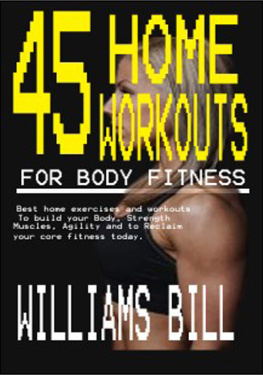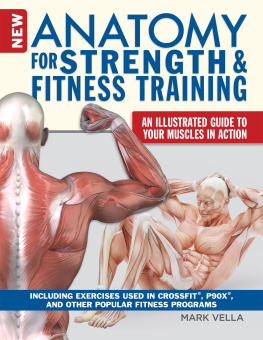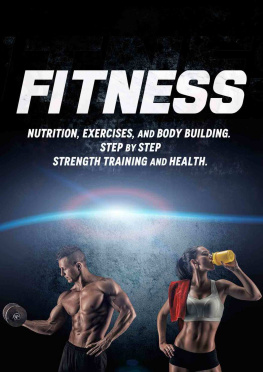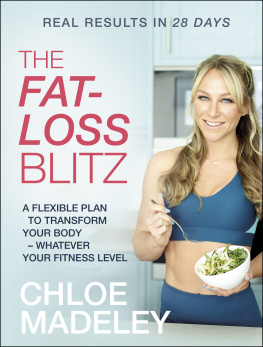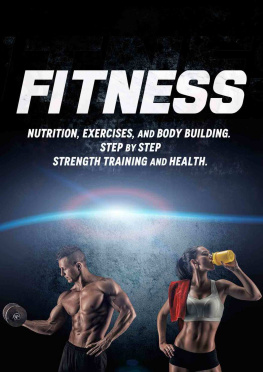ANATOMY
OF STRENGTH
TRAINING
General DisclaimerThe contents of this book are intended to provide useful information to the general public. All materials, including texts, graphics, and images, are for informational purposes only and are not a substitute for medical diagnosis, advice, or treatment for specific medical conditions. All readers should seek expert medical care and consult their own physicians before commencing any exercise program or for any general or specific health issues. The author and publishers do not recommend or endorse specific treatments, procedures, advice, or other information found in this book and specifically disclaim all responsibility for any and all liability, loss, or risk, personal or otherwise, which is incurred as a consequence, directly or indirectly, of the use or application of any of the material in this publication. | Thunder Bay Press An imprint of the Baker & Taylor Publishing Group 10350 Barnes Canyon Road, San Diego, CA 92121 www.thunderbaybooks.com |
Copyright 2010 by Moseley Road Inc.Copyright under International, Pan American, and Universal Copyright Conventions. All rights reserved. No part of this book may be reproduced or transmitted in any form or by any means, electronic or mechanical, including photocopying, recording, or by any information storage-and-retrieval system, without written permission from the copyright holder.
Brief passages (not to exceed 1,000 words) may be quoted for reviews.Thunder Bay is a registered trademark of Baker & Taylor. All rights reserved.All notations of errors or omissions should be addressed to Thunder Bay Press, Editorial Department, at the above address. All other correspondence (author inquiries, permissions) concerning the content of this book should be addressed to Moseley Road, Inc., 123 Main Street, Irvington, NY 10533.
www.moseleyroad.com.ISBN-13: 978-1-60710-335-6 (ebook)
CONTENTS
T he ultimate objective of any strength-training program is this: effectiveness. First and foremost, effective strength training or musculoskeletal conditioning must address all of the muscles, bones, joints, ligaments, and tendons of the body. This is because the body is a system, and that system (like any other system) is only as good as its weakest link.Therefore, in order for any strength-training program to be truly effective, it must address the body as a system, and regardless of whether it is for a sixteen-year-old or a sixty-year-old, a linebacker or a librarian, in my opinion, the program must consist of 5 Essential Exercises.The reason that this is the case is quite simply, that when broken down into components, the body does only five things: flexion (bending of a joint), extension (straightening of a joint), adduction (moving limb toward the body), abduction (moving limb away from the body), and rotation (turning or twisting). In this book, Ive created categories of exercises that represent each movement, and in some cases combine two different ones depending on the joint being activated:1.
Deadlift2. Lunge3. Push-up4. Chin-up5. Ab Wheel
1. DEADLIFT


3. PUSH-UP

4. CHIN-UP
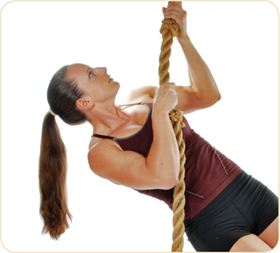
5. AB WHEEL
 The categories provide a 5 Essential Exercise regimen that addresses each of the bodys movements. Below are the five exercises, primary muscles, and movements addressed in each exercise category.
The categories provide a 5 Essential Exercise regimen that addresses each of the bodys movements. Below are the five exercises, primary muscles, and movements addressed in each exercise category. In this book, the rotational aspect of movement is basically addressed by either creating a rotational torque using unilateral resistance, or by using the same basic movement in a different plane.Ive included approximately ten to fifteen variations of each exercise, all of which make the specific category address slightly different aspects of the bodys function. Any level of conditioning can be effectively built on these five movements with a very modest, very basic set of equipment.This book includes visual and textual representations of each of the 5 Essential Exercises, as well as variations that you can make in order to adjust for skill level and intensity when using them.
In this book, the rotational aspect of movement is basically addressed by either creating a rotational torque using unilateral resistance, or by using the same basic movement in a different plane.Ive included approximately ten to fifteen variations of each exercise, all of which make the specific category address slightly different aspects of the bodys function. Any level of conditioning can be effectively built on these five movements with a very modest, very basic set of equipment.This book includes visual and textual representations of each of the 5 Essential Exercises, as well as variations that you can make in order to adjust for skill level and intensity when using them.
Ive also included a basic matrix of conditioning programs depicting some different ways in which the exercises may be used. There are many, many ways to skin the proverbial cat, so consequently there is an almost unlimited amount of variety that can be created programmatically by mixing and matching elements from each of the five categories.You must understand that the end result will also depend on how you use these essentials. The how, or variables, that need to be manipulated for these exercises are skill, time, intensity, and frequency, or, more specifically, repetitions, sets, weights, sessions per week, increments of progression, and technique.There are many excellent books on how to use these variables for a given desired effect, ranging from increased overall endurance and range of motion to absolute strength and the ability to generate power (force at high speeds), so I will not address anything in this book to that level of specificity. This book is designed to give anyone an understanding of the necessary elements of muscular conditioning and to guide you on how they should be used, with some basic programs as examples.I also would like to be crystal clear from the beginning regarding the commitment required to be successful with a conditioning program: There are NO SHORTCUTS! I in no way want the reader to assume that this is a seven-minute-a-day deal. That is simply not ever the case. I am, and have always been, vehemently opposed to the idea of shortening or condensing the time required to become healthy and fit.



